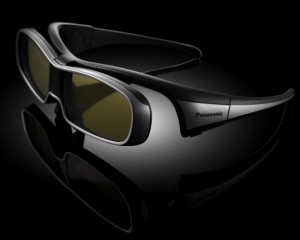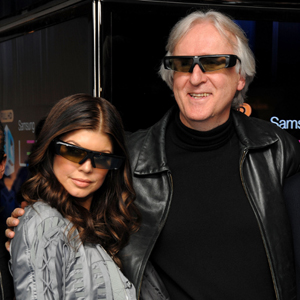 Anybody who kept track of the news and highlights from CES this year knows that, as predicted, one trend dominated everything else: 3D. And since you’ll need a new TV–and glasses!–to view the new 3D movies, games and TV programs, it follows that the main TV-related announcements all centered on 3D-compatibility.
Anybody who kept track of the news and highlights from CES this year knows that, as predicted, one trend dominated everything else: 3D. And since you’ll need a new TV–and glasses!–to view the new 3D movies, games and TV programs, it follows that the main TV-related announcements all centered on 3D-compatibility.
But before I get into the nitty-gritty of actual announcements, it’s worth taking a step back for some perspective on 3D. Here are a few general things to remember as you sift through 3D coverage from the show.
-The first 3D TVs should ship in “spring” of this year–likely later rather than earlier–at which time we’ll publish reviews. Until then we can’t say how they’ll actually perform in the real world. The models shown at CES were not final versions, and their picture quality in show demos is subject to change.
-The 3D TVs announced at the show are the most expensive in their respective manufacturers’ product lines, although we don’t expect them to cost much more than current high-end models. Aside from Vizio, nobody announced pricing on any 3D TVs.
-The new 3D TVs use technology that’s similar to what’s seen in IMAX 3D and other commercial 3D theaters, and it’s superior to the technology typified by the cardboard glasses with color filter lenses.
-As far as we know, there’s no way to upgrade ANY current HDTV to be compatible with the new 3D display technologies. Update: Mitsubishi announced an adapter box that would enable their current and older 3D-capable, DLP-based rear-projection models to work with 3D.
-You can watch normal TV and HDTV on a 3D TV with no problem.
For a true 3D experience, you’ll need new 3D content, whether it’s a 3D TV channel, a 3D Blu-ray Disc, or a 3D video game. No such content is widely available now, and small amounts will trickle out throughout 2010. (The first 3D TV channels will likely be on DirecTV in June).
-Not everyone can enjoy the 3D experience, and many people cannot see 3D at all or suffer headaches or other ill effects from it. We recommend anyone who’s considering a 3D TV to first watch a few 3D movies in the theater to see how it works for them. Then remember that TVs are a lot smaller.
All of the CES announcements are subject to change, and most will certainly be modified as the year progresses.
Now that that’s taken care of, let’s check out the major TV announcements.
We’ll start with Panasonic, since that company’s 3D TV, the TC-PVT25 series, scored our “Best in Show” award this year. The set includes glasses (pictured at the top) and should be among the first 3D TVs to come to market in 2010. We’re actually even more excited about the potential of its black-level performance, judging from specs and some brief eyes-on time we had at the booth, to perhaps rival that of the good old Pioneer Kuro. The step-down, non-3D G20 and G25 series models should have identical black levels as the VT25, again judging by their specs.
LG and Samsung also proffered plasmas at the show, and while only Samsung promised 3D compatibility, both included new filter technologies that used the word “black” on some models (LG PK750 and PK950; Samsung PNC8000)–so perhaps Panasonic will face a stiffer challenge than last year in the important black-level department. Notably, all plasmas announced at the show (including a 65-inch Panasonic) are Energy Star 4.0-compatible, which leads us to believe that the new blue sticker is as easy to achieve as it was under 3.0.
Scads of LCDs were announced–with numerous 3D models–but we were able to cover only a fraction of them. Every major TV maker will have new LED-based models, some in a confusing array of new backlight technologies beyond simple edge-lit vs. local dimming.
Samsung, the king of new LED/LCD technology, was mum on the specifics of its new LED system (found on the UNC7000 and UNC9000 models, among others), although we do know it relies on edge-lighting, not a full array of LEDs behind the screen as on the excellent 8500 series. The flagship 9000 models should be among the thinnest TVs available, for what that’s worth.
LG divulged more about its LED tech, and two of its models (the slick LE9500, a Best Of nominee, and the LE8500) employ “detailed” local dimming, whereas a third (the LE7500) gets the so-called “basic” variety. Sony announced a slew of models but we had time to cover only the two high-end “XBR” sets (the LX900 and HX900). One has local dimming and the other does not. Vizio’s XVT Pro models and Toshiba’s Cell TV (the third Best Of nominee) will likely bracket the price range, at the low and high ends, respectively, of the well-featured, local-dimming models available this year.
Display technology trends were augmented by scads of new interactive announcements at the show. LG and Panasonic will support Skype video/voice calls on their interactive models; Samsung will launch an App store that works “across devices,” (see the LC750 writeup for what few details we have); Netflix will be added to Panasonic’s VieraCast service (but only for 2010 models) as well as to Vizio’s new “Via” interactive service; and Vudu will launch its own “apps” on select Mitsubishi, Sharp and Toshiba models (see the current Mitsubishi LT-249 review for a taste), in addition to its standard VOD service on just about every TV brand save for Sony and Panasonic (which use Amazon VOD instead). Many interactive TVs will have built-in Wi-Fi, while optional Wi-Fi dongles will be available for most others. New input schemes, including a touch-screen remote from Samsung, a Wii-like clicker from LG, and the capability to plug in a USB keyboard from Panasonic, should make using those services easier.
Between 3D, new display technologies and the interactive TV deluge, 2010 is already shaping up to be one of the most confusing years in new TV technology yet–and that’s saying something.
by David Katzmaier
http://ces.cnet.com/8301-31045_1-10433127-269.html?tag=rtcol
www.cis-nc.com
 Some animation, for kids and adults alike, such as The Princess and the Frog and another season of South Park, lead the way this week.
Some animation, for kids and adults alike, such as The Princess and the Frog and another season of South Park, lead the way this week.




